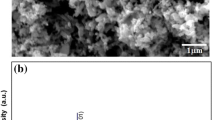Abstract
This paper presents and discusses issues relevant to solidification of a chosen lead-free solder, the eutectic Sn-3.5%Ag, and its composite counterparts. Direct temperature recordings for the no-clean solder paste during the simulated reflow process revealed a significant amount of undercooling to occur prior to the initiation of solidification of the eutectic Sn-3.5%Ag solder, which is 6.5 °C, and for the composite counterparts, it is dependent on the percentage of copper nanopowder. Temperature recordings revealed the same temperature level of 221 °C for both melting (from solid to liquid) and final solidification (after recalescence) of the Sn-3.5%Ag solder. Addition of copper nanoparticles was observed to have no appreciable influence on melting temperature of the composite solder. However, it does influence solidification of the composite solder. The addition of 0.5 wt.% copper nanoparticles lowered the solidification temperature to 219.5 °C, while addition of 1.0 wt.% copper nanoparticles lowered the solidification temperature to 217.5 °C, which is close to the melting point of the ternary eutectic Sn-Ag-Cu solder alloy, Sn-3.7Ag-0.9Cu. This indicates the copper nanoparticles are completely dissolved in the eutectic Sn-3.5%Ag solder and precipitate as the Cu6Sn5, which reinforces the eutectic solder. Optical microscopy observations revealed the addition of 1.0 wt.% of copper nanoparticles to the Sn-3.5%Ag solder results in the formation and presence of the intermetallic compound Cu6Sn5. These particles are polygonal in morphology and dispersed randomly through the solder matrix. Addition of microsized copper particles cannot completely dissolve in the eutectic solder and projects a sunflower morphology with the solid copper particle surrounded by the Cu6Sn5 intermetallic compound coupled with residual porosity present in the solder sample. Microhardness measurements revealed the addition of copper nanopowder to the eutectic Sn-3.5%Ag solder resulted in higher hardness.










Similar content being viewed by others
References
J.H. Lau, Solder Joint Reliability: Theory and Applications. Van Nostrand Reinhold, New York, p 1–30
P.A. Bouleau (1994) Packaging for Optoelectronic Interconnections. J. Metals 46(6):41–45
H. Mavoori (2000) Dimensionally Stable Solders for Optoelectronics and Microelectronics. J. Metals 52:29–32
J.L. Marshall, J. Calderon (1997) Hard-particle Reinforced Composite Solders Part 1: Micro-characterisation. Solder. Surface Mount Technol. 26:22–28
Y. Wu, J.A. Sees, C. Pouraghabagher, L.A. Foster, J.L. Marshall, E.G. Jacobs, R.F. Pinizzotto (1993) The Formation and Growth of Intermetallic In Composite Solder. J. Electron. Mater. 22(7):769–777
J.H. Lee, D.J. Park, J.N. Heo, Y.H. Lee, D.H. Shin, Y.S. Kim (2000) Reflow Characteristics of Sn-Ag Matrix In-situ Composite Solders. Scripta Mater. 42(8):827–831
Composite Solders, IBM Technical Disclosure Bulletin, vol. 29(4), 1986, p 1573–1574
I. Dutta, B.S. Majumdar, D. Pan, W.S. Horton, W. Wright, and Z.X. Wang (2004) Development of a Novel Adaptive Lead-Free Solder Containing Reinforcements Displaying the Shape-Memory Effect. J. Electron. Mater. 33(4):258–270
J.L. Marshall, J. Calderon, J. Sees, G. Lucey, J.S. Hwang (1991) Composite Solders. IEEE Trans. Components Hybrids Manufact. Technol. 14(4):698–702
Y.F. Yan, J.P. Liu, Y.W. Shi, Z.D. Xia (2004) Study on Cu Particles-enhanced SnPb Composite Solder. J. Electron. Mater. 33(3):218–225
F. Guo, S. Choi, J.P. Lucas, K.N. Subramanian (2001) Microstructural Characterisation of Reflowed and Isothermally-aged Cu and Ag Particulate Reinforced Sn-3.5Ag Composite Solders. Solder. Surface Mount Technol. 13(1):7–18
F. Guo, J.P. Lucas, K.N. Subramanian (2001) Creep Behavior in Cu and Ag Particle-reinforced Composite and Eutectic Sn3.5%Ag and Sn4Ag0.5Cu non-composite Solder Joints. J. Mater. Sci. Electron. 12:27–35
D.C. Lin, G.X. Wang, T.S. Srivatsan, M. Al-Hajri, M. Petraroli (2003) Influence of Titanium Dioxide Nanopowder Addition on Microstructural Development and Hardness of Tin–Lead Solder. Mater. Lett. 57:3193–3198
D.C. Lin, S. Liu, T.M. Guo, G.-X. Wang, T.S. Srivatsan, M. Petraroli (2003) An Investigation of Nanoparticles Addition on Solidification Kinetics and Microstructure Development of Tin-Lead Solders. Mater. Sci. Eng. A 360:285–292
S. Choi, J.P. Lucas, K.N. Subramanian, T.R. Bieler (2000) Formation and Growth of Interfacial Intermetallic Layers in Eutectic Sn-Ag Solder and its Composite Solder Joints. J. Mater. Sci.: Mater. Electron. 11(6):497–502
H. Okamoto, Phase Diagrams of Dilute Binary Alloys. ASM International, Materials Park, OH, 2002, p 241
K.W. Moon, W.J. Boettinger, U.R. Kattner, F.S. Biancaniello, C.A. Handwerker (2000) Experimental and Thermodynamic Assessment of Sn-Ag-Cu Solder Alloys. J. Electron. Mater. 29(10):1122–1136
S. Chada, A. Herrmann, W. Laub, R. Fournelle, D. Shan guan, A. Achari (1997) Microstructural Investigation of Sn-Ag and Sn-Pb-Ag Solder Joints. Solder. Surface Mount Technol. 9:9–13
F. Ochoa, J.J. Williams, and N. Chawla, The Effects of Cooing Rate on Microstructure and Mechanical Behavior of Sn-3.5%Ag Solder, J. Metals, 2003, June, p 56–60
M. McCormack S. Jin G.W. Kammlott H.S. Chen (1993) New Pb-free Solder Alloy with Superior Mechanical Properties. Appl. Phys. Lett. 63:15–17
K.N. Subramanian and J.G. Lee, Physical Metallurgy in Lead-free Electronic Solder Development, J. Metals, 2003, May, p 26–32
Acknowledgments
This research work was jointly supported by: (a) the NER Grant from National Science Foundation (DMI-0103159), (b) Firestone Research Initiative Fellowship, (c) Summer Faculty Research Grant of University of Akron, and (d) Research Fellowship from Research Center for Advanced Manufacturing in Southern Methodist University. Sincere thanks and appreciation is extended to the unknown reviewers for their critical comments and suggestions which have helped strengthen this technical manuscript.
Author information
Authors and Affiliations
Corresponding author
Rights and permissions
About this article
Cite this article
Lin, D., Srivatsan, T., Wang, GX. et al. Understanding the Influence of Copper Nanoparticles on Thermal Characteristics and Microstructural Development of a Tin-Silver Solder. J. of Materi Eng and Perform 16, 647–654 (2007). https://doi.org/10.1007/s11665-007-9092-5
Received:
Revised:
Accepted:
Published:
Issue Date:
DOI: https://doi.org/10.1007/s11665-007-9092-5




